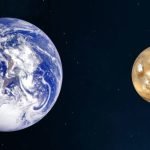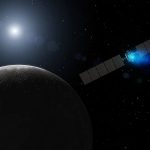Space & Future
Scientists may have solved the mystery behind the universe’s gravitational waves
Scientists at the University of Colorado Boulder think they may have cracked a mystery that has puzzled astronomers since the first detection of the...
Your dog’s dinner could be warming the planet more than your own
Many dog owners carefully think about what they eat for the sake of the planet—but new research suggests they may want to pay just...
How ‘red geyser’ galaxies stay silent for billions of years
Some of the universe’s largest galaxies have gone strangely quiet.
They stopped forming new stars billions of years ago and have remained dormant ever since—even...
Dark stars could be the missing link in the universe’s earliest mysteries
A new study suggests that a strange and long-theorized type of object called a dark star could help explain several major mysteries uncovered by...
Thin ice may have kept ancient Martian lakes alive for decades
For years, scientists have faced a puzzling contradiction about Mars.
On one hand, the planet is covered with ancient lake beds, shorelines, and sediment layers...
A new study finds a subtle dance between dark matter and neutrinos
Time again for a tale of things dark and mysterious. A tale of dark matter. It's a well-told tale, but this time it involves...
This system reveals how super-Earths are born
One of the best things about being able to see thousands of exoplanetary systems is that we’re able to track them in different stages...
Hidden plasma rings around red dwarfs may shape the fate of their planets
When astronomers think about whether distant planets could support life, they often focus on the planets themselves.
But a growing body of research shows that...
How ancient Mars may have kept its lakes liquid
For years, scientists have puzzled over a contradiction on Mars.
The planet’s surface is covered with features that look unmistakably like ancient lake beds—shorelines, layered...
Scientists track a powerful solar region for a record 94 days
In 2024, the Sun put on one of its most dramatic shows in decades.
A single highly active region on its surface unleashed the strongest...
Young galaxies grow up fast, study finds
Astronomers have captured the most detailed look yet at faraway galaxies at the peak of their youth, an active time when the adolescent galaxies...
Astronomers see a supernova from 10 billion years ago using nature’s own telescope
Astronomers have discovered something truly remarkable: the first-ever gravitationally lensed superluminous supernova that can be seen as multiple, clearly separated images.
The distant explosion, named...
Deep Space
Gravity from Mars has an effect on earth’s oceans
We are all too familiar of the Moon’s effect on our planet. It’s relentless tug causes our tides but even Mars, which is always...
Did dwarf planet Ceres form in the asteroid belt? New research offers clues
Ceres, the largest object in the asteroid belt between Mars and Jupiter, has long puzzled scientists about its origins.
With a diameter of almost 1,000...
China’s Chang’E 4 mission discovers new ‘secrets’ from far side of the moon
A lunar lander named for the Chinese goddess of the moon may have lessened the mystery of the far side of the moon.
The fourth...
Scientists detect a black hole swallowing a neutron star
Scientists, including from Australian National University (ANU), say they have detected a black hole swallowing a neutron star for the first time.
Neutron stars and...
7 best places to search for life in the solar system
If humanity is ever going to find life on another planet in the solar system, it’s probably best to know where to look.
Plenty of...





















